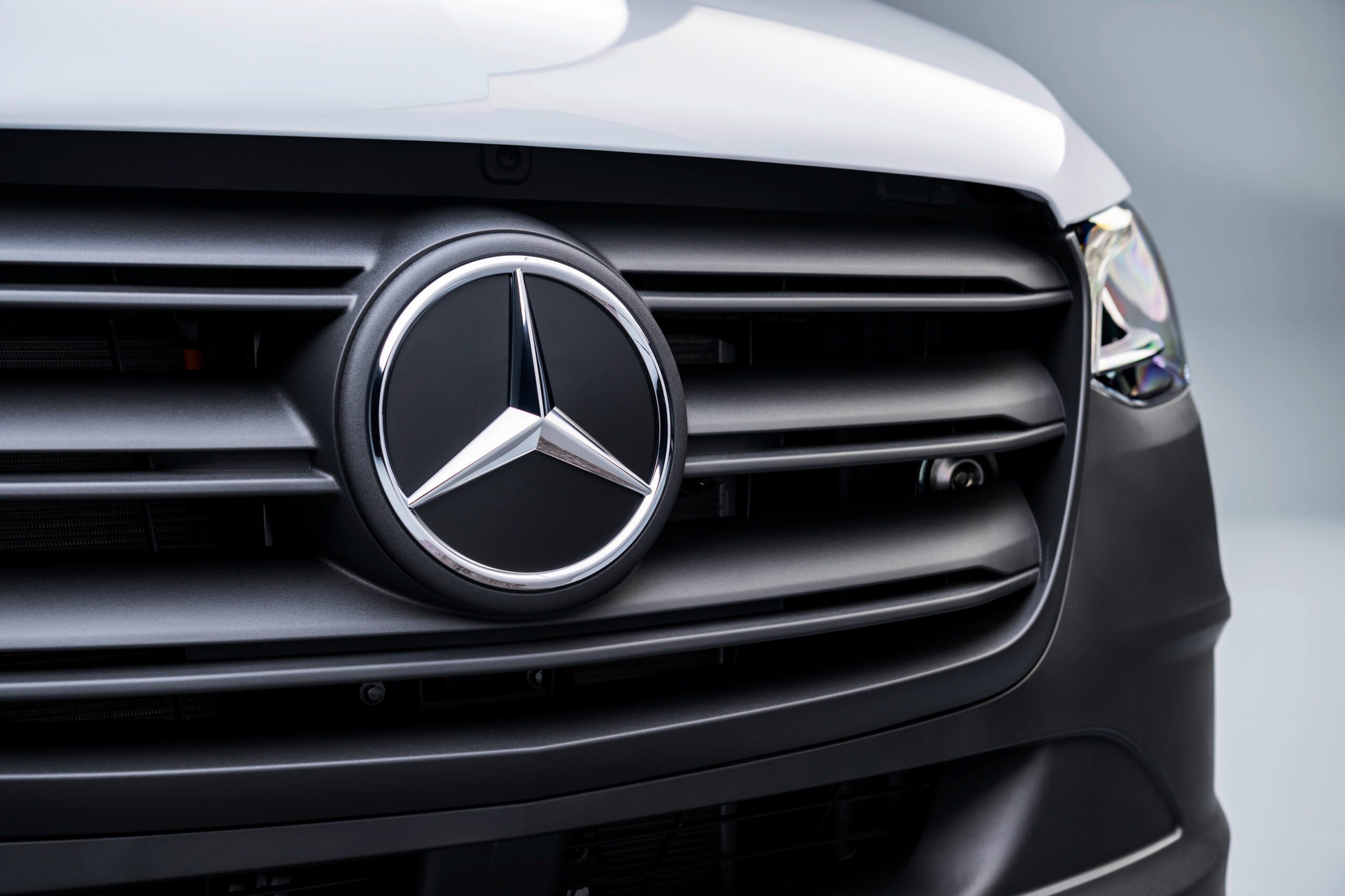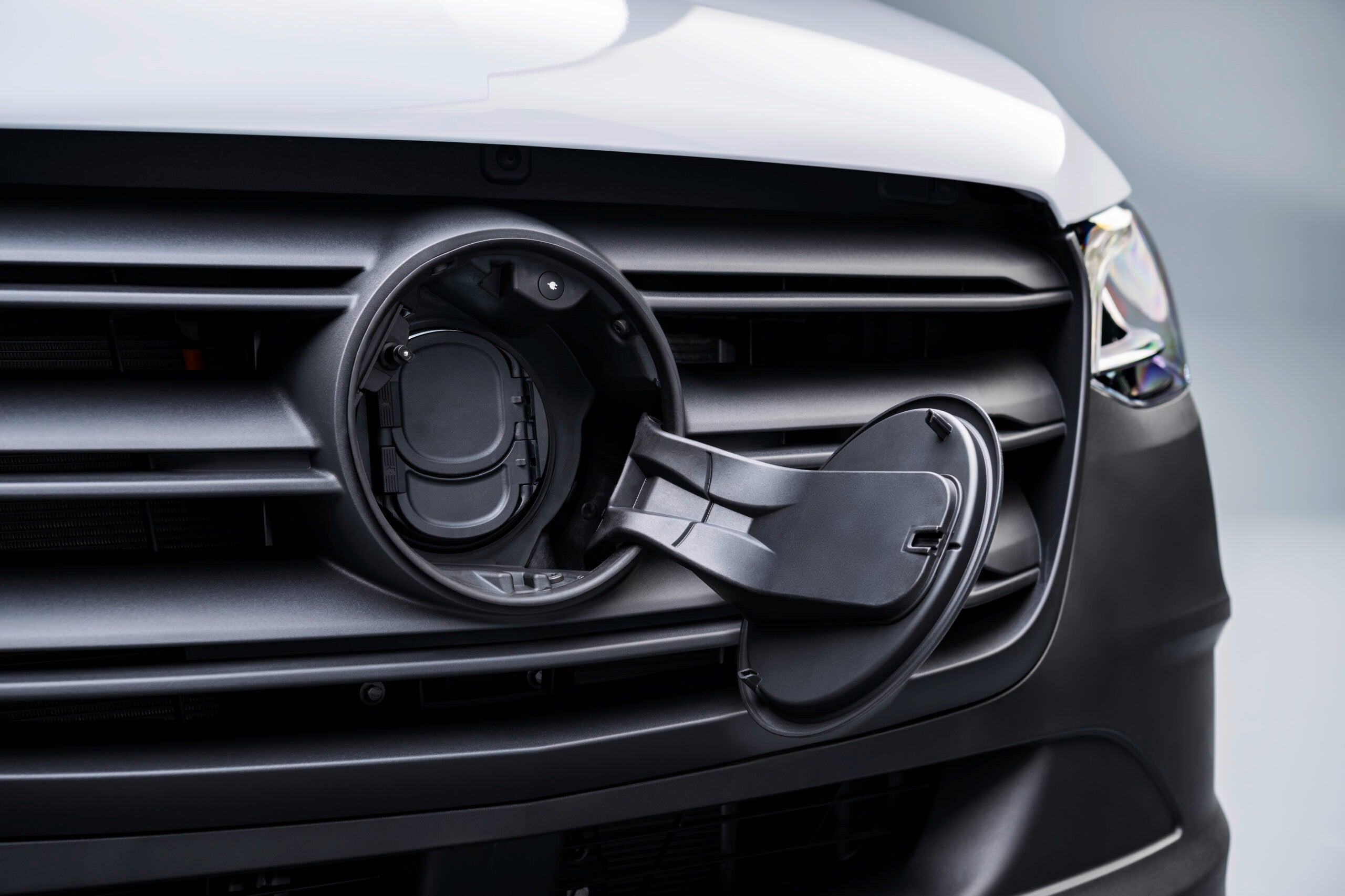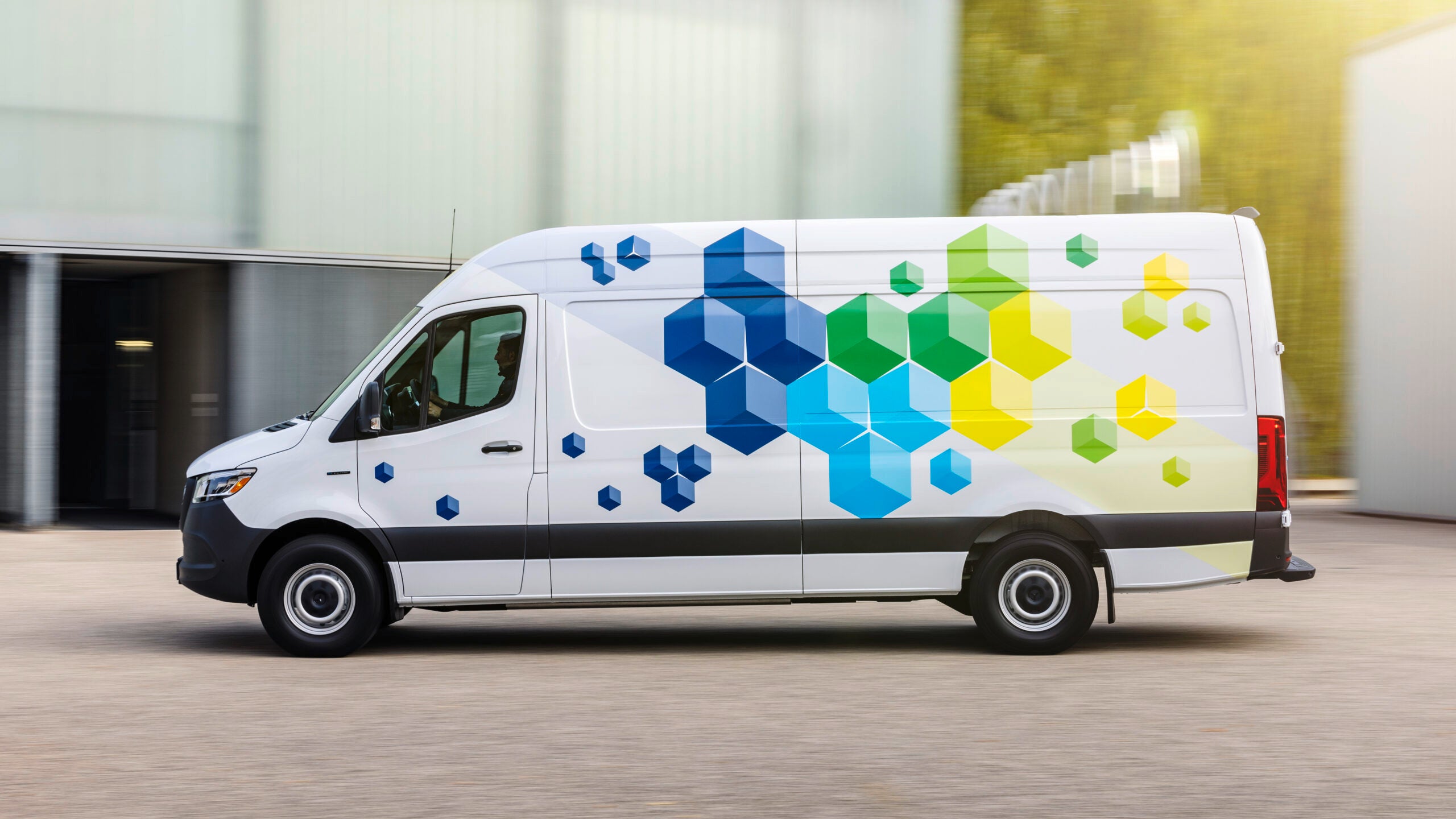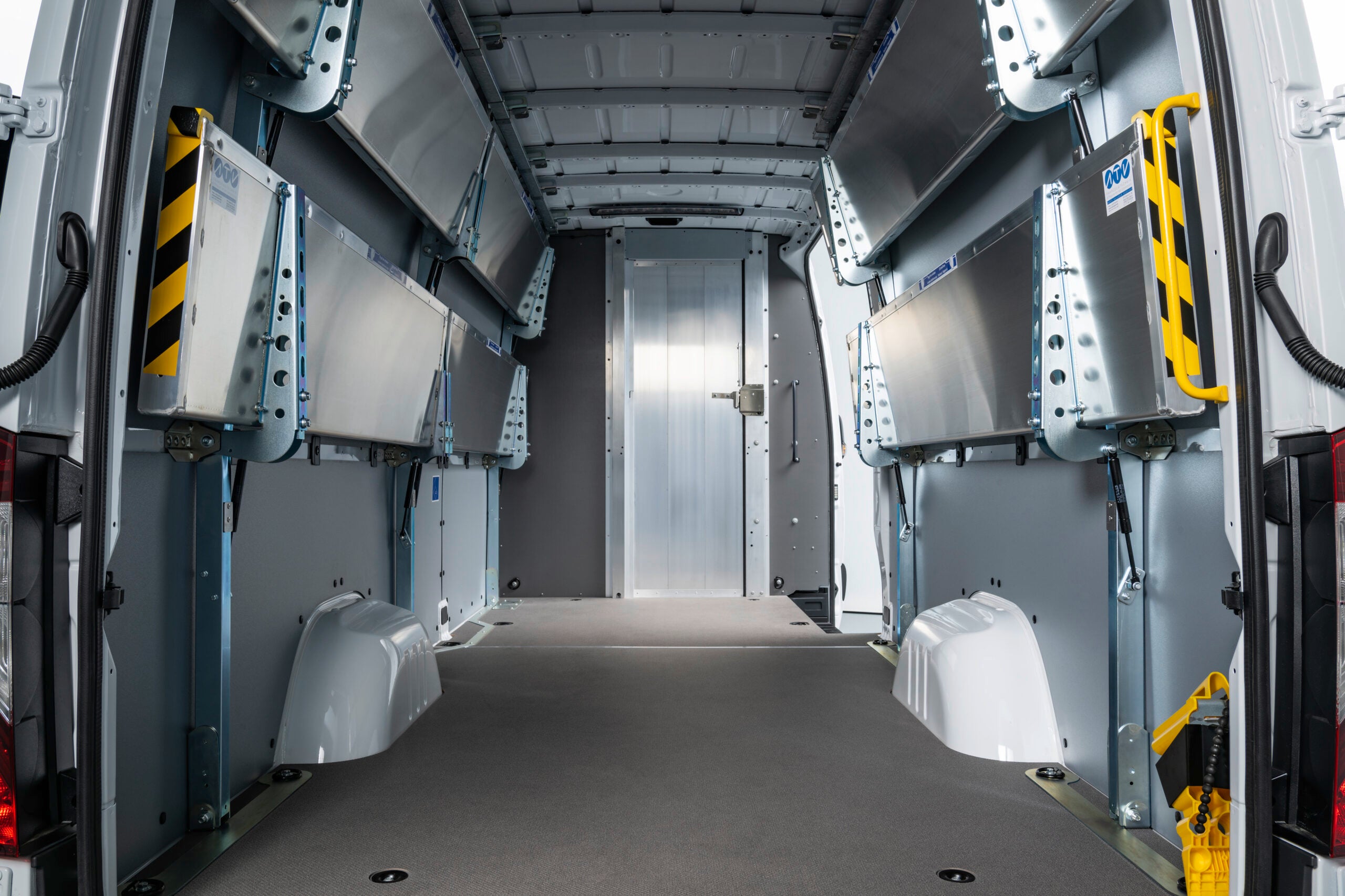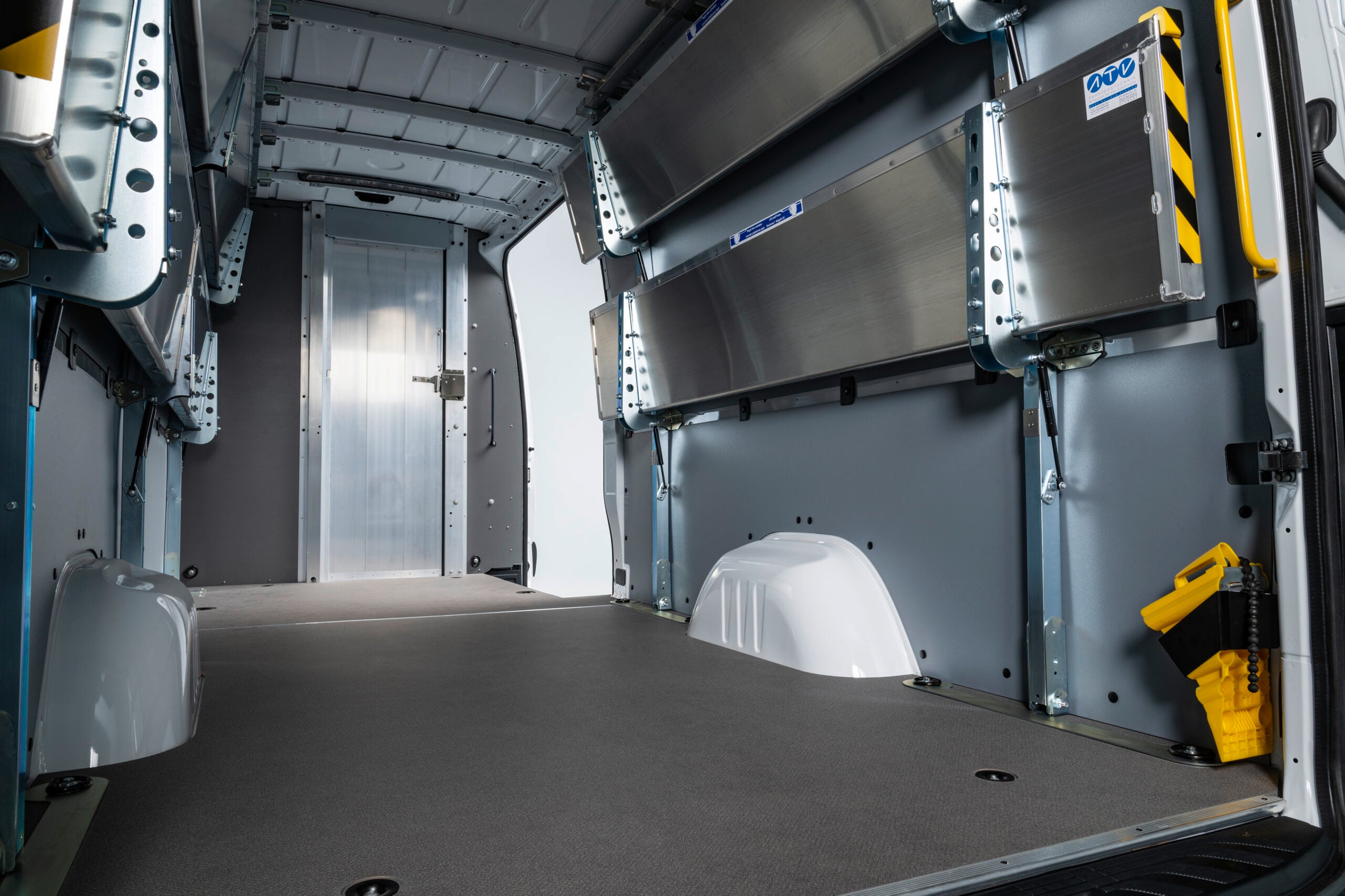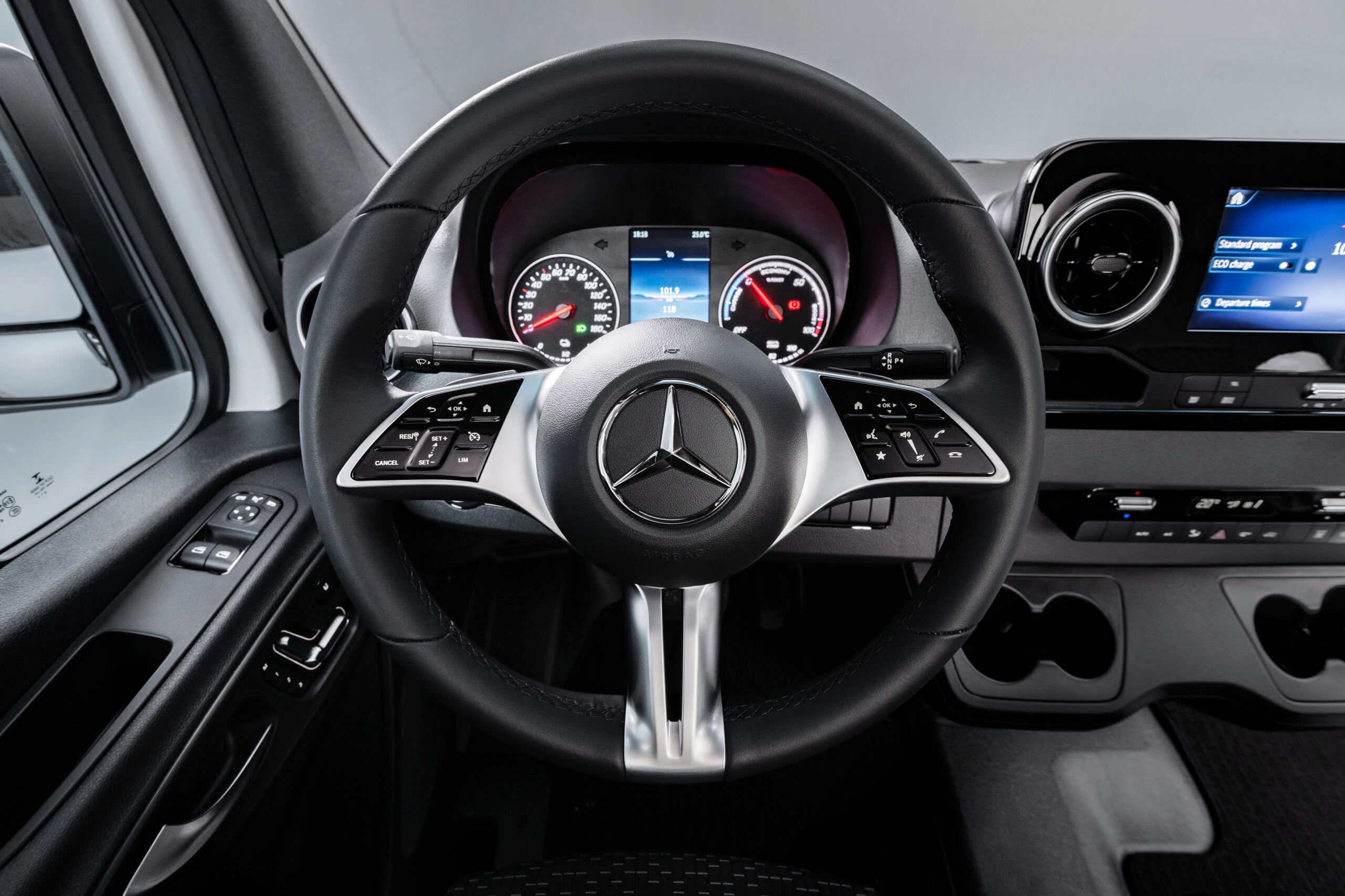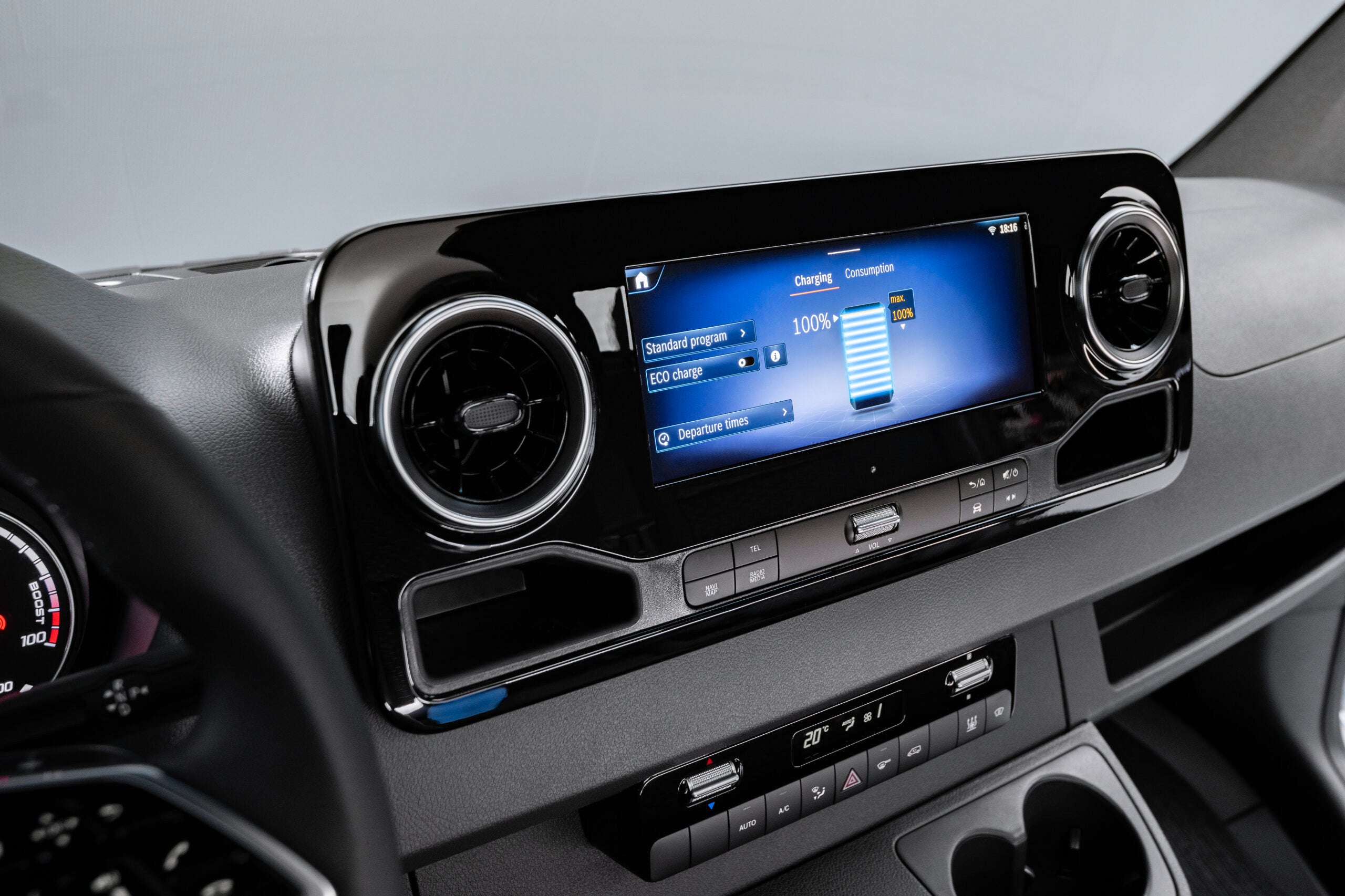The 2024 Mercedes-Benz eSprinter is officially coming to the U.S. The commercial EV is set to offer impressive range figures along with the practicality that only a van can deliver. And perhaps more importantly, with up to 248 miles of range, it presents business owners and fleet managers with another competent alternative to the popular Ford E-Transit.
Mercedes started building the first eSprinter vans back in 2019 for the European market, with the model long-rumored for a future U.S. launch. Now, we know that's a reality, with the eSprinter set to debut in U.S. and Canada in the second half of 2023. Initial deliveries will be of the long wheelbase, a high-roof model featuring the largest battery available in the range.
Mercedes-Benz
The new eSprinter has been significantly upgraded to suit American applications. Mercedes have equipped it with a 113 kWh battery, up from 55 kWh i248n the earlier European market version. Mercedes estimates say that should be good for up to 248.5 miles of range on the WLTP combined cycle, or 311 miles on the WLTP city cycle. WLTP results are typically more generous than the EPA's range figures, but the numbers are impressive regardless.
That range should stand the eSprinter in good stead versus its competition. The eSprinter will have over twice the range of the high-roof Ford E-Transit, which only offers 108 miles from its 67 kWh battery in low-roof form. As for cargo, the eSprinter it offers 488 cubic feet of load space, almost identical to the Ford E-Tranit's 487.3 cu-ft capacity. Even in its longest-range form, the low-roof Ford E-Transit only offers 126 miles of range, almost half of what the eSprinter can achieve.
Mercedes-Benz
Mercedes will offer 100 kW (134 hp) and 150 kW (201 hp) motor options will be available across the eSprinter range, with both offering up to 400 Nm (295 lb-ft) of torque. As for charging, the eSprinter will accept AC charging at a rate of up to 9.6 kW. DC fast charging is available at up to 115 kW. At this rate, the eSprinter can be charged from 10 to 80 percent capacity in approximately 42 minutes, according to Mercedes.
The eSprinter boasts a modular design that aims to simplify the construction of vans in multiple body styles and variants. The front module of the van holds all the high-voltage components and is interchangeable between various wheelbase and battery configurations. The battery module sits between the axles to provide a low center of gravity, while the rear module contains the electric drive unit which sends power to the rear wheels.
Mercedes-Benz
Notably, the eSprinter will be built in both Europe and the U.S. Mercedes has invested in production facilities in Charleston, South Carolina, in addition to Ludwigsfelde, Germany, which will produce the eSprinter in the future. This is in addition to production that will take place in the company's primary Düsseldorf plant. It marks the first time Mercedes has ever built a Sprinter van in the U.S., with the decision perhaps in part due to the long-standing "Chicken Tax" on overseas-built commercial vehicles.
For van fleets looking to go electric, the eSprinter is a compelling option. It offers a range far in excess of its competition, particularly in high-roof form, along with similar practicality. Outside of organizations like Amazon and the USPS, which can afford their own specialized electric vans, the Mercedes van should have a lot to offer.
Got a tip? Let the author know: [email protected]

